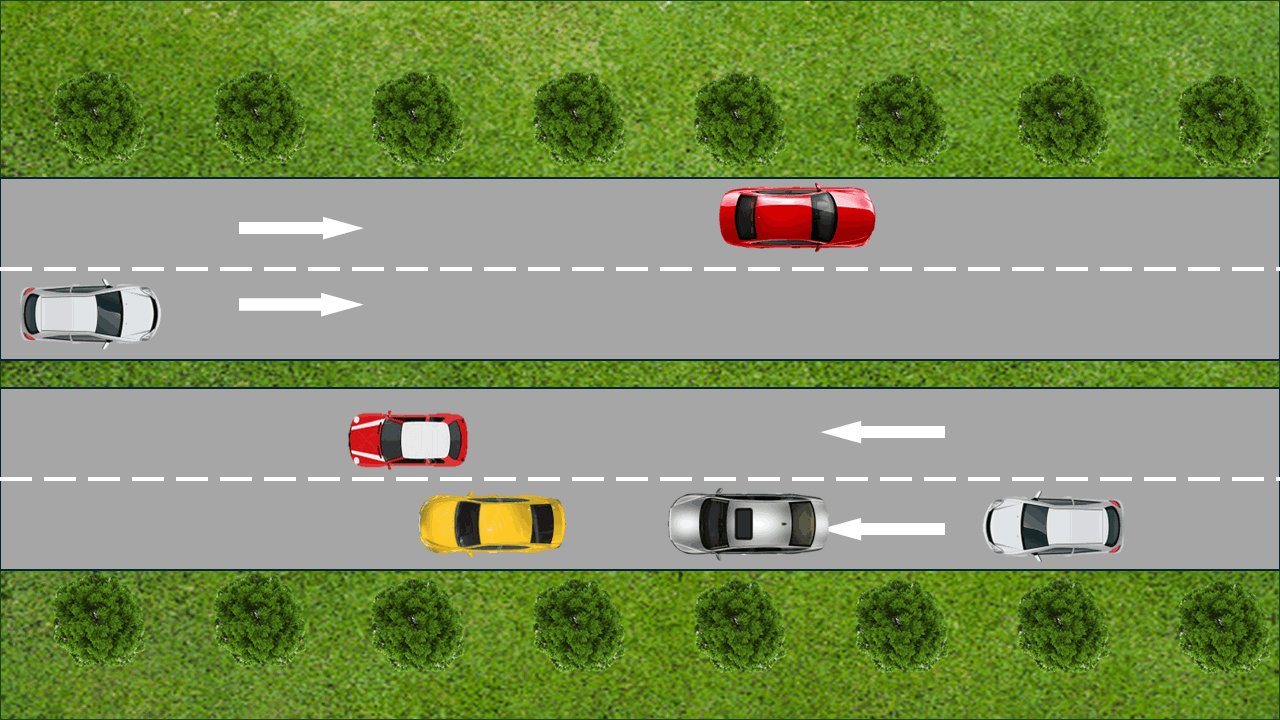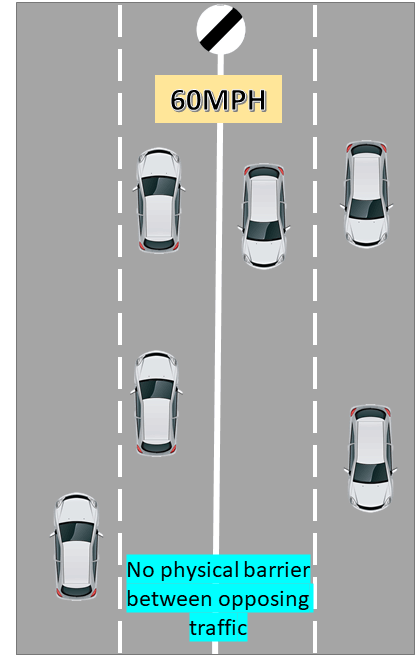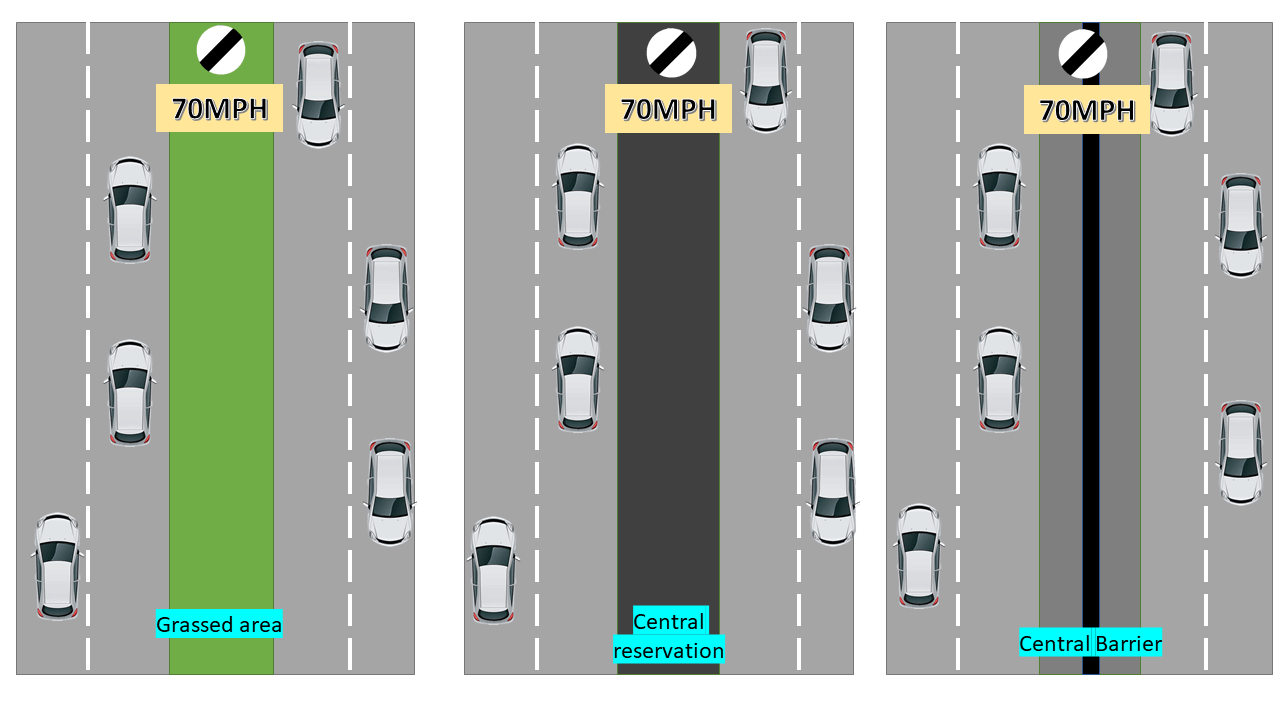

Roads where commonly you may see the National Speed Limit signs and Dual lanes in both directions.
Confusion comes from a lot of drivers as to what the speed limit is when on these.
For cars:
The easiest way to know what the speed limit is.
Imagine the four lanes, two in one direction and two in the opposing direction.
If you had a ball and you rolled it from one side of the road to the other and it was not restricted by anything such as a barrier, grass or a central reservation, then the limit would be 60MPH
If however the ball was restricted by a barrier, grass or central reservation where vehicles in opposing directions could not touch each other then the limit would be 70MPH (unless signs state otherwise)
The images below give an idea of what you should be looking for as clarification on 60mph or 70mph


Because of increased speed on these types of road, always ensure additional mirror checks are made and that you are always fully aware of who is around you.
If needing to overtake, ensure that there is no-one alongside you before moving out, and that you fully understand how fast a following vehicle is travelling at before committing to the overtake.
They may be travelling a lot faster than you first thought and your change of lane could cause them to slam on their brakes, plough into the back of you if you get your timing wrong or take evasive action with their steering causing them to go off road.
Early planning for an overtake is key to letting this happen safely.
As you are driving along the road it will be extremely clear that you are catching up with vehicles ahead of you. As soon as you realise this is happening, this is the time you need to start your planning routine. Get those mirrors checked, assess the volumes of traffic behind you and their approach speed to you, when you decide to carry out the overtake, signal early to make other vehicle aware of your intentions, but only commit to the overtake when it is safe to do so.
Once you have passed the vehicle you are overtaking move back into the left lane as soon as it is safe to do so assuming you are not overtaking multiple vehicles. If you are overtaking multiple vehicles then as soon as you have passed these also move back into the left lane as soon as it is safe to do so.
The best method when moving back into the left lane is to wait until you can see the front of the last vehicle you overtook in your rear view mirror
(not the door mirror) by waiting until you can see the front of the last vehicle you overtook there will be adequate space between you and them to not cause any issues changing lane.
Always be mindful of pulling in in front of a large vehicle, especially if that vehicle is travelling downhill.
Their ability to slow down is considerably less powerful than your car.
It is not advisable to overtake other vehicle where there are slip on roads, as the vehicle in front of you may also consider moving into lane 2 to allow a clear lane for the vehicles entering the dual carriageway.
Also be very mindful that on dual carriageways there may be right turns for traffic leaving it or joining it. There will usually be a central reservation/ filter lane to allow vehicles to move into to turn right, but traffic joining the dual carriageway from the right will initially not have a lot of speed built up as they join, so be very aware that you may need to change lanes or slow right down to accommodate their joining.
Offline Website Creator